| |
|
Site June 2008
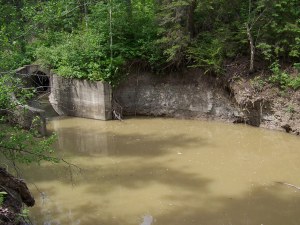
|
Site June 2008
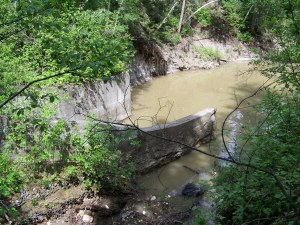
|
| |
|
Location and preparation of access road construction, November 2008

|
Access road under construction, November 2008
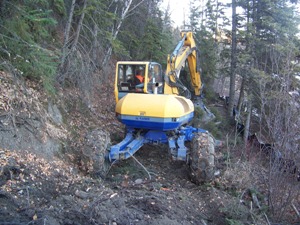
|
| |
Access road under construction, November 2008
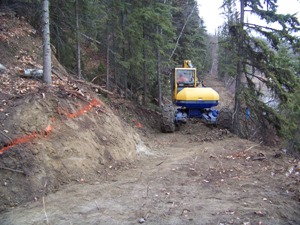
|
Access ramp location into creek channel before construction, November 2008
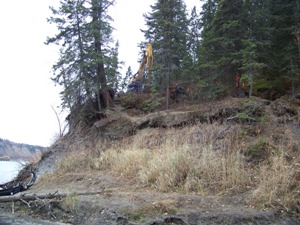
|
| |
Access ramp construction, November 2008
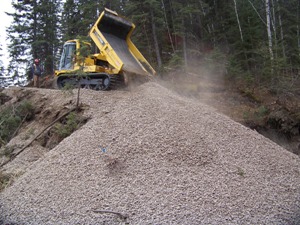
|
Completed access ramp, November 2008
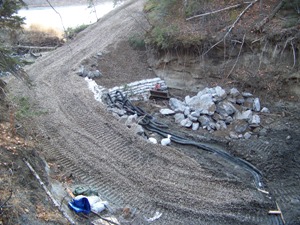
|
| |
|
Site de-watering system (coffer dam) within channel, November 2008
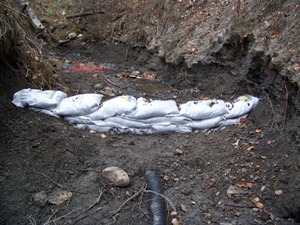
|
Site de-watering system (coffer dam) within outfall structure, November 2008
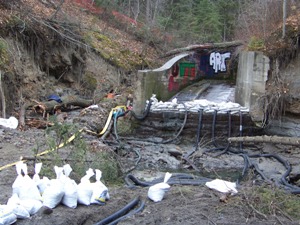
|
| |
Settling pond for de-watering system,
November 2008
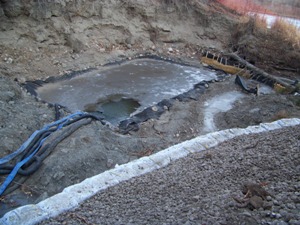
|
Sediment barriers, combination of straw bales and silt fencing
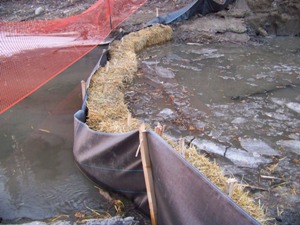
|
| |
|
Re-grading bank on south side of channel,
November 2008
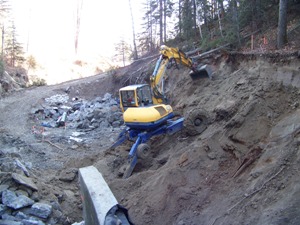
|
Hauling away excess fill material
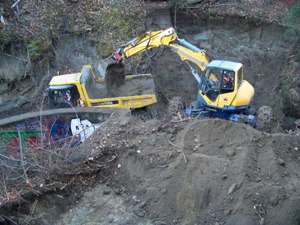
|
| |
Excavation up stream and adjacent to outfall outlet
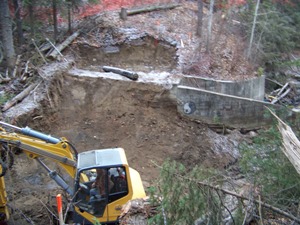
|
South side of channel excavation/re-grading
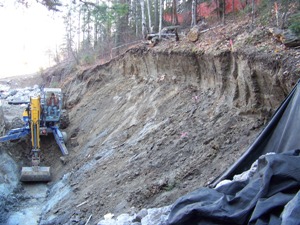
|
| |
South side of channel excavation / re-grading
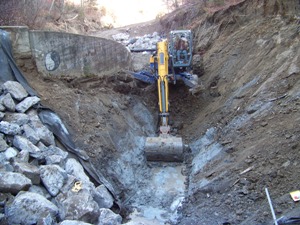
|
South side of channel geotextile and riprap placement
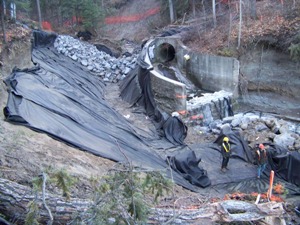
|
| |
|
Unloading riprap within key of channel
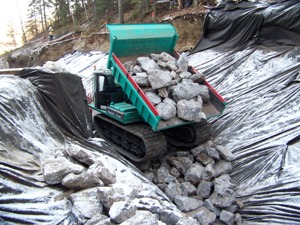
|
Riprap placement south side of channel
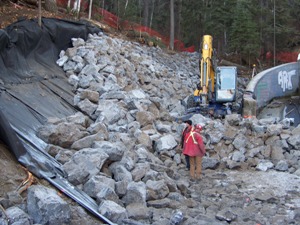
|
| |
|
Unloading riprap north side of channel
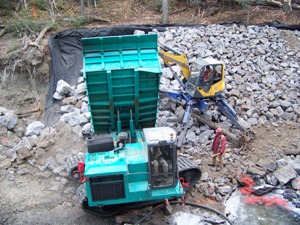
|
Riprap placement, south side of channel
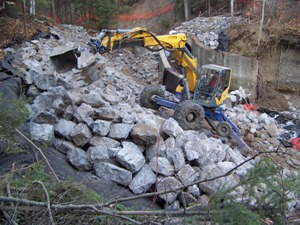
|
| |
|
Re-grading slope, north side of channel,
December 2008
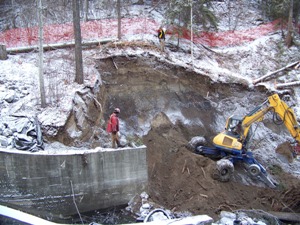
|
Re-grading slope, north side of channel,
December 2008
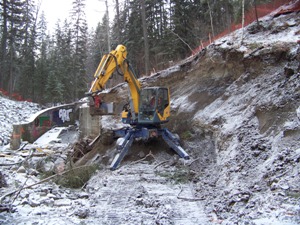
|
| |
|
Geotextile placement, north side of channel
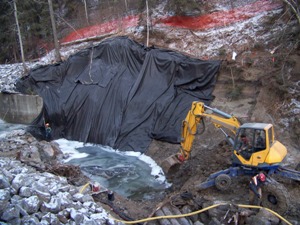
|
Completed south side, north side under construction
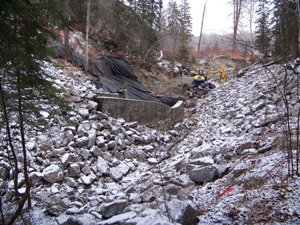
|
| |
|
Transport of riprap into the ravine using constructed access ramp
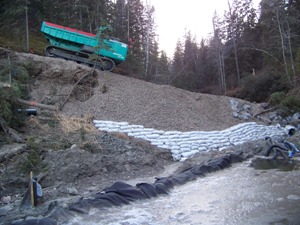
|
Unloading riprap
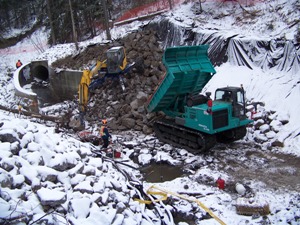
|
| |
|
Riprap placement north side
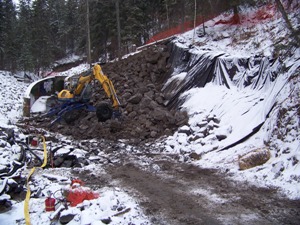
|
Riprap placement north side
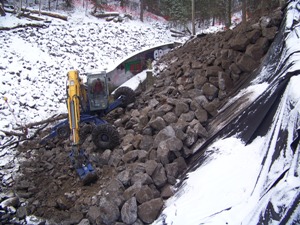
|
| |
|
Root wad placement within channel
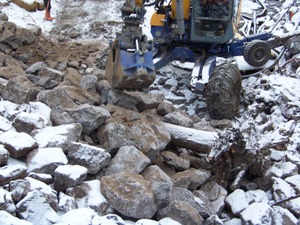
|
Removal of temporary access ramp
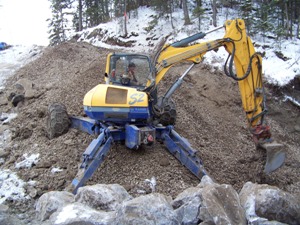
|
| |
|
Access ramp removed, construction completed
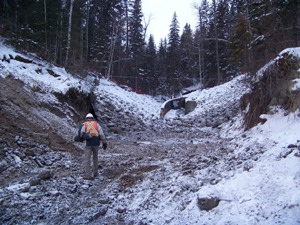
|
Construction completed
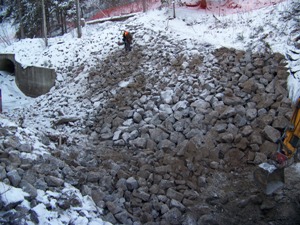
|
| |
|
Construction completed
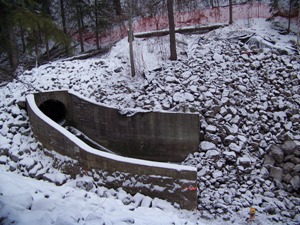
|
Construction completed (photo: Trisha Boorman)
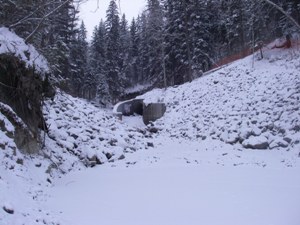
|
| |
|
As built plan view of completed work
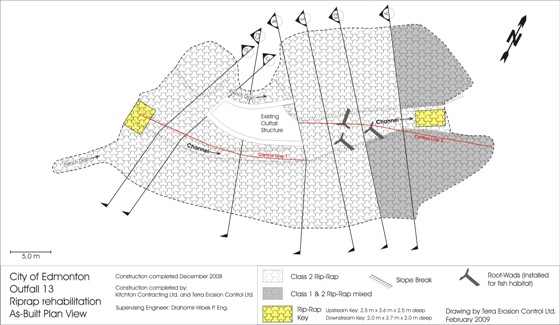
|
| |
|
View of North Saskatchewan River from the mouth of Wolf Willow Creek Ravine, December 2008
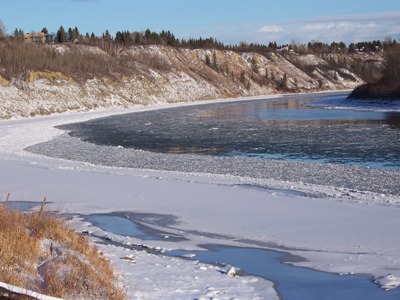
|
| |
|

Copyright © 2010
Terra Erosion Control Ltd.
Storm Water Outfall Rehabilitation
|

